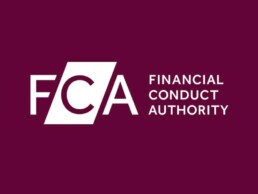The Consumer Duty Regulation
Improving outcomes with the Consumer Duty Regulation

How can buy-side retail financial firms improve consumer outcomes and the wider economy?
The FCA introduced new guidelines, rules and policies last year in 2022, comprised as the Consumer Duty Regulation, to ensure products and services are delivered at fair value to customers, as well as a better standard of care. With the recent rise of the cost-of-living crisis, consumers are struggling and are faced with difficult times ahead, including the UK economy. This Duty lays out responsibilities for Boards and senior management within firms, to implement this regulation, to not only benefit consumers, but the wider economy.
In a recent review published by the FCA in January 2023, the FCA identified key areas where firms are meeting obligations, and where areas of improvement are required. As stated in the Policy Statement PS22/9, the FCA would like to see firms make full use of the implementation period of this three-year strategy, to implement the Duty effectively, and that by October 2022, ‘firm’s boards (or equivalent management body) should have agreed their plans for implementing the Duty’ and to have evidenced this, to ‘challenge their plans to ensure they are deliverable and robust’ (Consumer Duty Implementation Plans, FCA, Jan 2023).
This review published by the FCA, helps firms understand the FCA’s expectations, and to work together with firms to ensure the Duty is implemented effectively. The review identified that firms are behind with the implementation of the Duty and need to improve their approach. Three key areas were suggested where firms can focus on for the second half of the implementation period, the first being ‘effective prioritisation of the Duty’ – in order to reduce risk of poor customer outcomes, and to prioritise the implementation plans. The second ‘embedding substantive requirements’, on how firms are over-confident on their plans, and instead should focus on the substantive requirements laid out in the Duty, and review ‘their products and services, communications and customer journeys, they identify and make the changes needed to meet the new standards’ (Consumer Duty Implementation Plans, FCA, Jan 2023). The third area of focus identified was on how firms should work together with other firms, to share information in the distribution chain, to ensure the Duty can be implemented effectively and consistently (Consumer Duty Implementation Plans, FCA, Jan 2023).

What can retail financial firms do to improve and what are the implications of not meeting the Duty requirements?
From the FCA’s recent review, it has been determined there are still many areas by which firms are falling short, which raises the risks of not meeting the Duty obligation deadlines. From the governance aspect, the FCA’s review has established that the board members and senior management teams within firms, have no clearly defined and developed plans in place, neither timings, and lack engagement. When it comes to the plans compiled by firms, the project requirements and timelines are unclear, there is a lack of detail, explanation, and evidence on the implementation of the Duty, including how a firm’s purpose, culture and values are in alignment with the Duty.
Additionally, the review identified that firms also fail to define risks, and internal/external dependencies such as resource planning, budgeting, and technology resources, including working together with third parties, which as a result may impact the implementation plans. Further, firms fail to distinguish mitigation strategies and approaches or methodologies for conducting reviews and gap analysis of products, services, communications, and customer journeys, as part of implementation of the Four Outcomes within the Duty. Firms have also failed to provide in-depth details into the types of data they will require, and how this will be tested, and used, to better understand the customer outcomes, which is another key part of the Duty requirements.
How can Leading Point help to simplify this process?
At Leading Point, our team of expert practitioners can assist the board members and senior managers within retail financial firms, to conduct more in-depth project scope and planning, gap analysis, as well as workflow strategies, and assist to define clear methodologies and approaches to implement the Duty policies and rules. We are fully-equipped to help any organisation that is looking to improve their implementation plans for meeting the Consumer Regulations, to ensure deadlines are met, whilst reducing costs, and risks, with defined mitigation strategies, and enhanced quality of consumer data. This will not only better equip firms with meeting the Duty obligations, but will help to accelerate new business growth, to ensure high-quality products and services are delivered to consumers.
Appendix and Additional Information on the Duty Regulation
What is the Consumer Duty Regulation?
The FCA introduced the Consumer Duty Regulation, and published the Finalised Guidelines FG22/5, along with the Policy Statement PS22/9 in July 2022, which is a ‘standard of care firms should give to customers in retail financial markets’ (FG22/9, p.3).
The FCA states that the purpose of the Consumer Duty (‘the Duty’) is to provide ‘a fairer basis for competition’, to help ‘boost growth and innovation’ (What firms and customers can expect from the consumer duty and other regulatory reforms, FCA (Sept, 2022)).
The Duty is comprised of three key areas: A Consumer Principle; the Cross-Cutting Rules; and the Four Outcomes (FG22/9, p.3). Each of these three key areas focus on how firms should deliver suitable products and services, as well as good outcomes to consumers.
Which firms and who will it impact?
The FG22/5 Guidelines state that the Duty applies ‘across retail financial services’, and that ‘firms should review all examples in this guidance and consider how they may be relevant to their business models and practices’ (FG22/5).
As stated in the FG22/5 Guidance, it is the firms responsibility to identify which rules and principles are applicable to their firm, and ‘what they are required to do’ (FG22/5).
What is the timeline of this Regulation?
It has been proposed for the Duty to be enforced in two-phase implementation periods, the first being by the end of July 2023, whereby the Duty will apply to new and existing products and services that remain for sale or open for renewal, and the second date is by July 2024, whereby the Duty will come fully into force, and will apply to all closed products and services (PS22/9).
The following timeline has been extracted from the Policy Statement – Implementation Timetable (PS22/9):
Implementation Period | Timeline |
Firms’ boards (or equivalent management body) should have agreed their implementation plans and be able to evidence they have scrutinised and challenged the plans to ensure they are deliverable and robust to meet the new standards. Firms should expect to be asked to share implementation plans, board papers and minutes with supervisors and be challenged on their contents. | End of October 2022 |
Manufacturers should aim to complete all the reviews necessary to meet the four outcome rules for their existing open products and services by the end of April 2023, so that they can:
• Share with distributors by the end of April 2023 the information necessary for them to meet their obligations under the Duty (e.g., in relation to the price and value, and products and service outcomes)
| End of April 2023 |
Manufacturers should: • Identify where changes need to be made to their existing open products and services to meet the Duty and implement these remedies by the end of July 2023 | End of July 2023 |
The Duty will apply to all new products and services, and all existing products and services that remain on sale or open for renewal. This gives firms 12 months to implement the new requirements on the bulk of retail financial products and services, benefiting the majority of consumers | End of July 2023 |
The Duty will come fully into force and apply to all closed products and services. This extra 12 months will help those firms with large numbers of closed products and will also help mitigate some of the wider concerns firms raised about the difficulty of applying the Duty to these products (see Chapter 3). | End of July 2024 |
How should firms implement the Consumer Duty Regulation?
According to the Guidance (FG22/5), it is a firm’s responsibility to identify which policies and rules apply and what they will be required to do (FG22/5). In addition to this, the Guidance has dedicated Chapter 10, on the Culture, Governance and Accountability that the Duty sets out for firms to give their customers. This is so that firms shift their focus on customer outcomes, and to ‘review the outcomes of their customers to ensure they are consistent with the Duty’ (PS22/9).
The Guidance (FG22/5) states the following:
- The rules require firms to ensure their strategies, governance, leadership, and people policies (including incentives at all levels) lead to good outcomes for customers. The rules also make clear that we expect customer outcomes to be a key lens for important areas, such as Risk and Internal Audit.
- A firm’s board, or equivalent governing body, should review and approve an assessment of whether the firm is delivering good outcomes for its customers which are consistent with the Duty, at least annually.
- Individual accountability and high standards of personal conduct in firms will ensure that firms are meeting their obligations under the Duty.
The Guidance (FG22/5) outlines four important drivers of culture that firms will need to ensure they deliver on from: Purpose; Leadership; People; and Governance. The Duty will also hold senior managers accountable via the Senior Managers & Certification Regime (SMCR) (FG22/5). A firm’s board will be responsible for the submission of a Board Report, which will be comprised of an assessment of whether the ‘firm is delivering good outcomes for its customers which are consistent with the Duty’ (FG22/5). Firms will also be required to monitor their outcomes, with a key focus of the Duty requiring firms to ‘assess, test, and understand’ and be able ‘to evidence the outcomes their customers are receiving’ (FG22/5), thus firms will be required to identify relevant sources of their data, to ensure they are consistent with meeting the obligations of the Duty, to their customers.
Riding the ESG Regulatory Wave
[et_pb_section fb_built="1" _builder_version="4.4.8" min_height="1084px" custom_margin="16px||-12px|||" custom_padding="0px||0px|||"][et_pb_row column_structure="2_3,1_3" _builder_version="3.25" custom_margin="-2px|auto||auto||" custom_padding="1px||3px|||"][et_pb_column type="2_3" _builder_version="3.25" custom_padding="|||" custom_padding__hover="|||"][et_pb_social_media_follow url_new_window="off" follow_button="on" _builder_version="4.4.8" text_orientation="left" module_alignment="left" min_height="14px" custom_margin="1px||5px|0px|false|false" custom_padding="0px|0px|0px|0px|false|false" border_radii="on|1px|1px|1px|1px"][et_pb_social_media_follow_network social_network="linkedin" url="https://uk.linkedin.com/company/leadingpoint" _builder_version="4.4.8" background_color="#007bb6" follow_button="on" url_new_window="off"]linkedin[/et_pb_social_media_follow_network][/et_pb_social_media_follow][et_pb_image src="https://leadingpointfm.com/wp-content/uploads/2020/09/wave-again.jpg" title_text="wave again" align_tablet="center" align_phone="" align_last_edited="on|desktop" admin_label="Image" _builder_version="4.4.8" locked="off"][/et_pb_image][/et_pb_column][et_pb_column type="1_3" _builder_version="3.25" custom_padding="|||" custom_padding__hover="|||"][/et_pb_column][/et_pb_row][et_pb_row column_structure="1_2,1_2" _builder_version="4.4.8"][et_pb_column type="1_2" _builder_version="4.4.8"][et_pb_text _builder_version="4.4.8" text_font="||||||||" text_font_size="14px" text_line_height="1.6em" header_font="||||||||" header_font_size="25px" width="100%" custom_margin="10px|-34px|-5px|||" custom_padding="16px|0px|5px|8px||" content__hover_enabled="off|desktop"]
Riding the ESG Regulatory Wave
In the third part of our Environmental, Social and Governance (ESG) blog series, Alejandra explores the implementation challenges of ESG regulations hitting EU Asset Managers and Financial Institutions.
A new brand of Regulation
Whilst the world is still recovering from the effects of COVID-19, and adapting to the issues uncovered as a result of the Black Lives Matter movement, adopting sustainable practices and timely adherence to ESG regulations is pivotal in safeguarding a company’s long-term success.
Widely recognised as being more than a fad or a feel-good exercise, it is clear that creating stronger ESG alignment correlates with higher equity returns.* Compliance with ESG regulations will create monumental changes to the financial services industry and it will take well-rounded experience in regulatory transition to ensure seamless adherence and minimal disruption to operations.
Similar to the Know Your Client (KYC) and Anti Financial Crime (AFC) regulation landscape of five years ago, ESG regulation implementation will require heavy lifting from the advisory and consulting sectors. Compounded with this, firms need a commitment to transition and adjust investment principles and processes in order to achieve these ambitious goals.
This influx of new rules reflects the regulators attempts to catch up with longstanding investor demand.** As a result of these optional and mandatory principles, businesses are understanding the importance of having well-governed and socially-responsible practices in place, making it the optimal time for financial institutions to start planning for ESG rules implementation.
Upcoming EU ESG Regulation Examples
- MiFID II Amendments (in force Q1 2020) Advisers will need to be more proactive with customers in relation to ESG considerations by asking them about their preferences
- The Taxonomy Regulation (in force July 2020) Sets out a common classification system to determine which economic activities and investments can be treated as “environmentally sustainable”
- Benchmarks Regulation Has been amended to include two new benchmarks to help increase transparency and avoid greenwashing
4. Stress Testing Rules for Banks Tools and mechanisms to integrate ESG factors into the EU prudential framework, banks’ business strategies, investment policies and risk management processesIn the last three years, ESG regulations grew by 158% in the UK, and by 145% in the US and Canada.***
The most regulated topics are business ethics and climate change in financial services, energy use and consumer rights in the US utilities, and product and service safety in healthcare and pharmaceuticals.
These regulations will affect many areas significant to asset managers, from corporate governance to process and product considerations. Implementing these changes effectively in order to gain a competitive advantage over their peers and avoiding the burden of non-compliance will mean drawing up consistent definitions, identifying the data points needed to set comparable targets, monitoring investments and reporting to regulators. Additionally, they will have to consider their role in the design, delivery and sale of financial services and products.
Data, Benchmarking and Disclosure
When it comes to benchmarking and disclosing data it is important to highlight the difference between ‘sustainability’ and ‘ESG’. Specifically with ESG information, the devil is in the detail. Asset managers must perform this in-depth data collection to satisfy their own corporate reporting requirements, to conduct appropriate investment and risk management decisions, and to make disclosures to clients and fund investors.
Because asset managers produce, distribute and ingest financial and non-financial ESG data, these regulations can bring competitive advantage and clarity to those who implement them effectively.
A typical asset manager will have to ingest endless subsets of relevant ESG considerations from various asset classes, industries and geographies all of which depend on differing underlying data in order to reach informed and accurate decisions. The major challenge is being able to determine the data points required to set comparable targets, monitor investments, and measure and compare performance across sectors, industries, and national or regional borders.
Implementation Insights
A proactive approach is essential as it enables firms to gain an early understanding of the changes needed to their operations and position them as credible, trusted partners with regulators.
Once an organisation has established its guiding vision and strategy for implementing investment principles, the real work begins. Updates to compliance, risk management, product development, data management, sales and reporting processes all need to take place and have to be coordinated across business units and functions to ensure consistency and traceability.
Analysis and assembly of regulations, standards and good practices, clear and up-to -date management views and evaluation of peer approaches all have to be part of a holistic regulatory implementation approach.
Whilst trying to predict the future and see the outcomes of implementing these future-facing requirements, it is important to remember the importance of flexibility and adaptability. The transition has to be well-managed and sustainable to be maintained. It is also important to incorporate lessons learnt from previous regulatory implementations. The organisations who will come out the strongest will be those who take the time to invest and begin with a good understanding of the changes in the operational environment and internal capabilities required.
** https://www.unpri.org/signatories/signatory-resources/signatory-directory
*** https://www.datamaran.com/global-insights-report
[/et_pb_text][/et_pb_column][et_pb_column type="1_2" _builder_version="4.4.8"][et_pb_text disabled_on="on|on|off" _builder_version="4.4.8" min_height="15px" custom_margin="452px||133px|||" custom_padding="8px|||||"]
"Compliance with ESG regulations will create monumental changes to the financial services industry and it will take well-rounded experience in regulatory transition to ensure seamless adherence and minimal disruption to operations."
[/et_pb_text][et_pb_text disabled_on="on|on|off" _builder_version="4.4.8" min_height="15px" custom_margin="452px||133px|||" custom_padding="8px|||||"]
"Because asset managers produce, distribute and ingest financial and non-financial ESG data, these regulations can bring competitive advantage and clarity to those who implement them effectively."
[/et_pb_text][et_pb_text disabled_on="on|on|off" _builder_version="4.4.8" min_height="15px" custom_margin="427px|||||" custom_padding="1px|||||"]
"Similar to the Know Your Client and Anti Financial Crime regulation landscape of five years ago, ESG regulation implementation will require heavy lifting from the advisory and consulting sectors."
[/et_pb_text][/et_pb_column][/et_pb_row][et_pb_row column_structure="1_4,1_4,1_2" _builder_version="3.25"][et_pb_column type="1_4" _builder_version="3.25" custom_padding="|||" custom_padding__hover="|||"][et_pb_team_member name="Alejandra Curtis " position="Leading Point" image_url="https://leadingpointfm.com/wp-content/uploads/2020/09/alejandra-1.png" linkedin_url="https://www.linkedin.com/in/alejandra-curtis-gutierrez-a851366a/" _builder_version="4.4.8" inline_fonts="Sarabun"]
Environmental Social & Governance (ESG) and Sustainable Investment
Client propositions and products in data-driven transformation in ESG and Sustainable Investing.
[/et_pb_team_member][/et_pb_column][et_pb_column type="1_4" _builder_version="4.4.8"][et_pb_team_member name="Rajen Madan" position="Founder and CEO" image_url="https://leadingpointfm.com/wp-content/uploads/2020/09/rajen.png" _builder_version="4.4.8" link_option_url="mailto:thush@leadingpoint.io"]
Responsible for delivering digital FS businesses.
Change leader with over 20 years’ experience in helping financial markets with their toughest business challenges.
[/et_pb_team_member][/et_pb_column][et_pb_column type="1_2" _builder_version="4.4.8"][et_pb_text _builder_version="4.4.8" text_font_size="15px" width="100%" link_option_url="https://leadingpointfm.com/esg-the-future-pillars-of-investing/"]
Upcoming blogs:
This is the third in a series of blogs that will explore the ESG world: its growth, its potential opportunities and the constraints that are holding it back. We will explore the increasing importance of ESG and how it affects business leaders, investors, asset managers, regulatory actors and more.
Artificial Intelligence: the Solution to the ESG Data Gap? In the second part of our Environmental, Social and Governance (ESG) blog series, Anya explores the potential opportunities surrounding Artificial Intelligence and responsible investing.
Is it time for VCs to take ESG seriously? In the fourth part of our Environmental, Social and Governance (ESG) blog series, Ben explores the current research on why startups should start implementing and communicating ESG policies into their business.
[/et_pb_text][/et_pb_column][/et_pb_row][et_pb_row column_structure="1_3,1_3,1_3" _builder_version="4.4.8"][et_pb_column type="1_3" _builder_version="4.4.8"][/et_pb_column][et_pb_column type="1_3" _builder_version="4.4.8"][et_pb_button button_url="https://leadingpointfm.com/wp-content/uploads/2020/09/Leading-Point-ESG-Riding-the-Regulatory-Wave-Aug-2020-1.pdf" button_text="Download our guide" button_alignment="center" _builder_version="4.4.8" custom_button="on" button_text_size="20px" button_text_color="#ffffff" button_bg_color="#0c71c3" button_font="|700||||on|||" button_icon="%%30%%" button_icon_color="#0c71c3" background_layout="dark" button_text_shadow_style="preset3"][/et_pb_button][/et_pb_column][et_pb_column type="1_3" _builder_version="4.4.8"][/et_pb_column][/et_pb_row][/et_pb_section][et_pb_section fb_built="1" module_class="txtwhite" _builder_version="3.22.3" background_color="#23408f" custom_padding="||62px|||" locked="off"][et_pb_row _builder_version="4.4.8"][et_pb_column type="4_4" _builder_version="4.4.8"][et_pb_text _builder_version="4.4.8" text_text_color="#ffffff" text_font_size="15px" header_text_color="#ffffff"]
How Leading Point can help
[/et_pb_text][/et_pb_column][/et_pb_row][et_pb_row column_structure="1_3,1_3,1_3" _builder_version="4.4.8"][et_pb_column type="1_3" _builder_version="4.4.8"][et_pb_blurb_extended title="Bringing clarity to your company’s ESG data" use_icon="on" font_icon="%%384%%" icon_color="#ffffff" use_icon_font_size="on" icon_font_size="39px" icon_hover_color="#17a826" style_icon="on" icon_shape="use_circle" use_shape_border="on" shape_border_color="#ffffff" shape_border_hover_color="#17a826" title_hover_color="#17a826" _builder_version="4.4.8" header_text_align="left" header_text_color="#ffffff" header_font_size="17px" read_more_icon="%%20%%" text_orientation="center" custom_margin="5px|1px|5px|1px|false|false" custom_padding="0px|0px|0px|0px|false|false" animation_style="fade" locked="off"]
By using our cloud-based data visualisation platform to bring together relevant metrics, we help organisations gain a standardised view and improve your ESG reporting and portfolio performance. Our live ESG dashboard can be used to scenario plan, map out ESG strategy and tell the ESG story to stakeholders.
[/et_pb_blurb_extended][/et_pb_column][et_pb_column type="1_3" _builder_version="4.4.8"][et_pb_blurb_extended title="Accelerating the collection of ESG metrics using AI" use_icon="on" font_icon="%%389%%" icon_color="#ffffff" use_icon_font_size="on" icon_font_size="39px" icon_hover_color="#17a826" style_icon="on" icon_shape="use_circle" use_shape_border="on" shape_border_color="#ffffff" shape_border_hover_color="#17a826" title_hover_color="#17a826" _builder_version="4.4.8" header_text_align="left" header_text_color="#ffffff" header_font_size="17px" read_more_icon="%%20%%" text_orientation="center" custom_margin="5px|1px|5px|1px|false|false" custom_padding="0px|0px|0px|0px|false|false" animation_style="fade" locked="off"]
AI helps with the process of ingesting, analysing and distributing data as well as offering predictive abilities and assessing trends in the ESG space. Leading Point is helping our AI startup partnerships adapt their technology to pursue this new opportunity, implementing these solutions into investment firms and supporting them with the use of the technology and data management.
[/et_pb_blurb_extended][/et_pb_column][et_pb_column type="1_3" _builder_version="4.4.8"][et_pb_blurb_extended title="Assisting companies to implement upcoming EU ESG regulations" use_icon="on" font_icon="%%392%%" icon_color="#ffffff" use_icon_font_size="on" icon_font_size="39px" icon_hover_color="#17a826" style_icon="on" icon_shape="use_circle" use_shape_border="on" shape_border_color="#ffffff" shape_border_hover_color="#17a826" title_hover_color="#17a826" _builder_version="4.4.8" header_text_align="left" header_text_color="#ffffff" header_font_size="17px" read_more_icon="%%20%%" text_orientation="center" custom_margin="5px|1px|5px|1px|false|false" custom_padding="0px|0px|0px|0px|false|false" animation_style="fade" locked="off"]
Implementing ESG regulations and providing operational support to improve ESG metrics for banks and other financial institutions. Ensuring compliance by benchmarking and disclosing ESG information, in-depth data collection to satisfy corporate reporting requirements, conducting appropriate investment and risk management decisions, and to make disclosures to clients and fund investors.
[/et_pb_blurb_extended][/et_pb_column][/et_pb_row][/et_pb_section][et_pb_section fb_built="1" _builder_version="3.22.3" animation_style="fade" locked="off"][et_pb_row _builder_version="3.25"][et_pb_column type="4_4" _builder_version="3.25" custom_padding="|||" custom_padding__hover="|||"][et_pb_text admin_label="Contact Us" module_class="txtblue" _builder_version="3.27.4" text_font="||||||||" link_font="||||||||" ul_font="||||||||" text_orientation="center"]
Contact Us
[/et_pb_text][et_pb_text admin_label="Form" _builder_version="3.27.4"][formidable id=2][/et_pb_text][et_pb_code admin_label="Social media icons" module_class="form" _builder_version="3.19.4" custom_margin="0px||0px" custom_padding="0px||0px"]
- Connect
[/et_pb_code][/et_pb_column][/et_pb_row][/et_pb_section]
How will the FCA business plan impact organisations over the next two years?
Leading Point of View
How will the FCA business plan impact organisations over the next two years?
Introduction
The FCA has recently issued its business plan (1) and focus for the upcoming four quarters. Kicking off with some stats – a mix of sobering and positive, the paper gives a clear outline of its proposed, cross-sector, regulatory oversight. One of the greatest challenges for the industry at present is the implementation of MiFID II provisions.
The FCA makes the point that this will facilitate the introduction of ‘major reforms to improve resilience and strengthen integrity and competition in wholesale markets’. Furthermore, work around market abuse will be enhanced. We highlight notable elements of the business plan and their implications for organisations, below.
Cybersecurity
Across all financial sectors lies the risk of cyber-attacks. With the impending implementation and governance of the General Data Protection Regulation, and potential fines of up to 4% of company revenue, organisations’ technological and operational resilience must be second to none. The FCA deems these qualities pivotal pieces of the cyber security jigsaw; it aims to police cyber capabilities and monitor financial crime and all major outages
during the upcoming year.
Senior Managers and Certification Regime
Whilst 2015/2016 saw banks and insurers bring about the operational changes borne out of SMCR, during 2017/2018, the FCA plans to oversee the resulting culture and governance of this significant shift in responsibility. Currently under consultation is the extension, to be implemented by 2018, of SMCR to all firms covered by FSMA. This would cement the prevailing accountability of senior managers’ individual areas of business within the industry.
Customer Engagement & Competition
The theme driving the most recent directives and regulations is placing the ball in the customers’ court. The dramatically changing financial landscape is being molded by the General Data Protection Regulation, the Payment Services Directive 2, to name but a few. The Open API world further allows the customer to have greater choice and engagement with their banking decisions. The FCA is likely to zero in on firms’ development in digitisation and automation and stewardship of customer data with a critical eye, to ensure there is no abuse.
Buy-side | Asset Management
MiFID II implications are beginning to take shape, however there is much to be done. The FCA recognises MiFID II as post-crisis regulation; it is driving reforms that will promote cross-sector market integrity and competition,
and consumer protection. Firms’ annual budgets will now, more than ever, be targeted towards improving IT systems and infrastructure, develop data capabilities, and ensure operational risk is kept at bay.
Leading Point Financial Markets brings compelling value at the intersection of Data, Governance & Compliance, and Digital and Operating Model Change initiatives. If you would like to further consider any of these impacts on your organisation, please contact saskia.blake@leadingptconsulting.com or rajen.madan@leadingptconsulting.com.
(1) https://www.fca.org.uk/publications/corporate-documents/our-business-plan-2017-18


